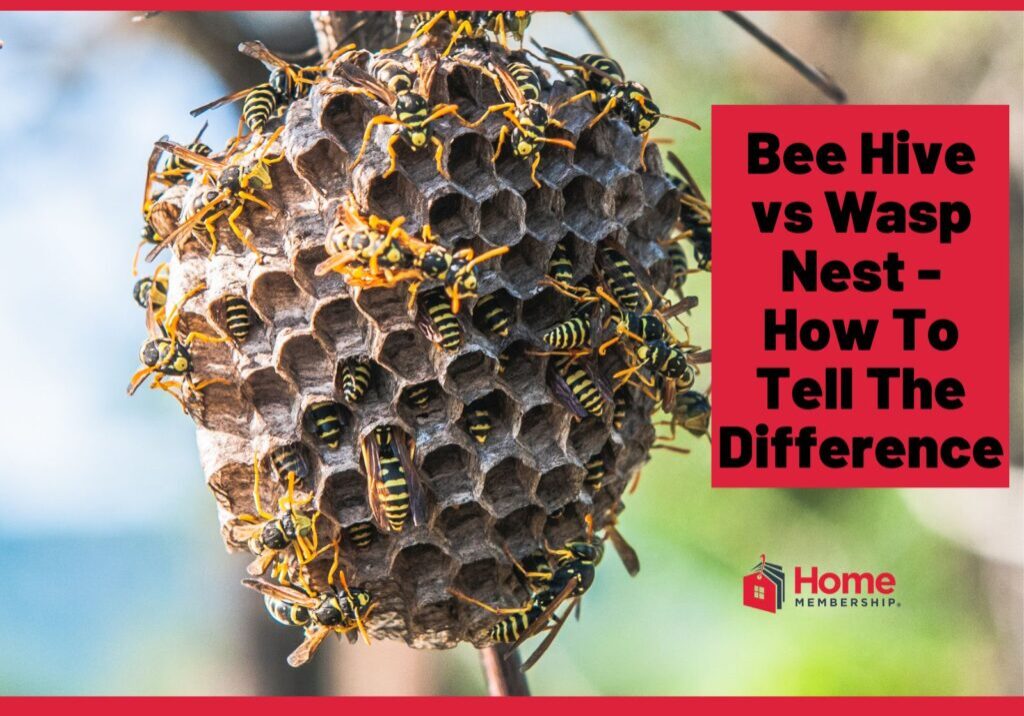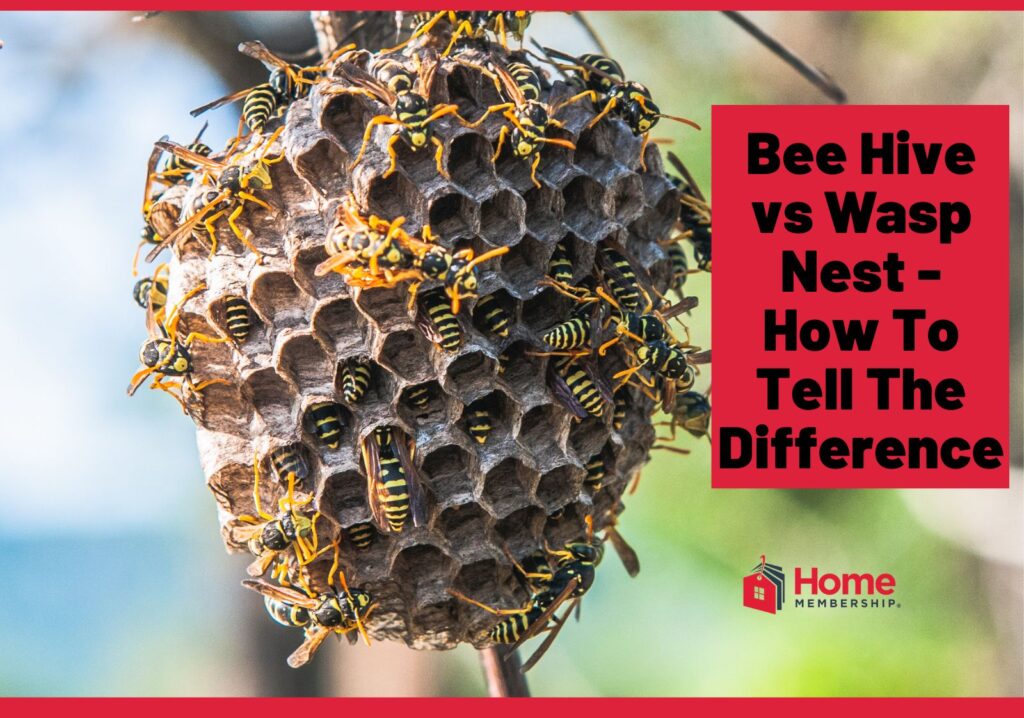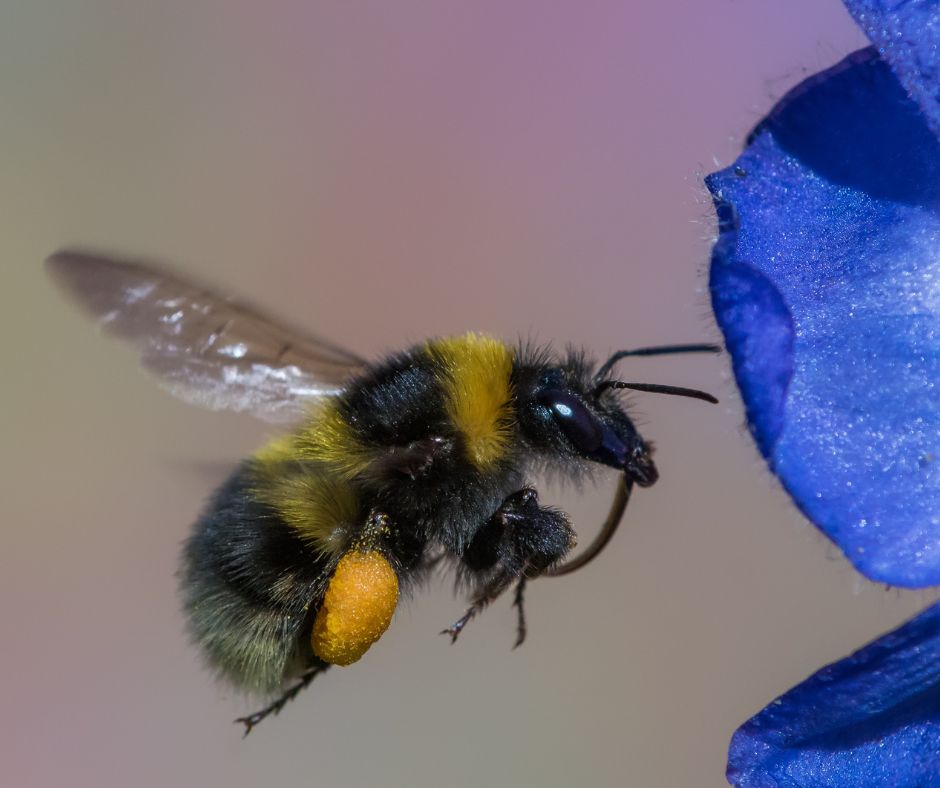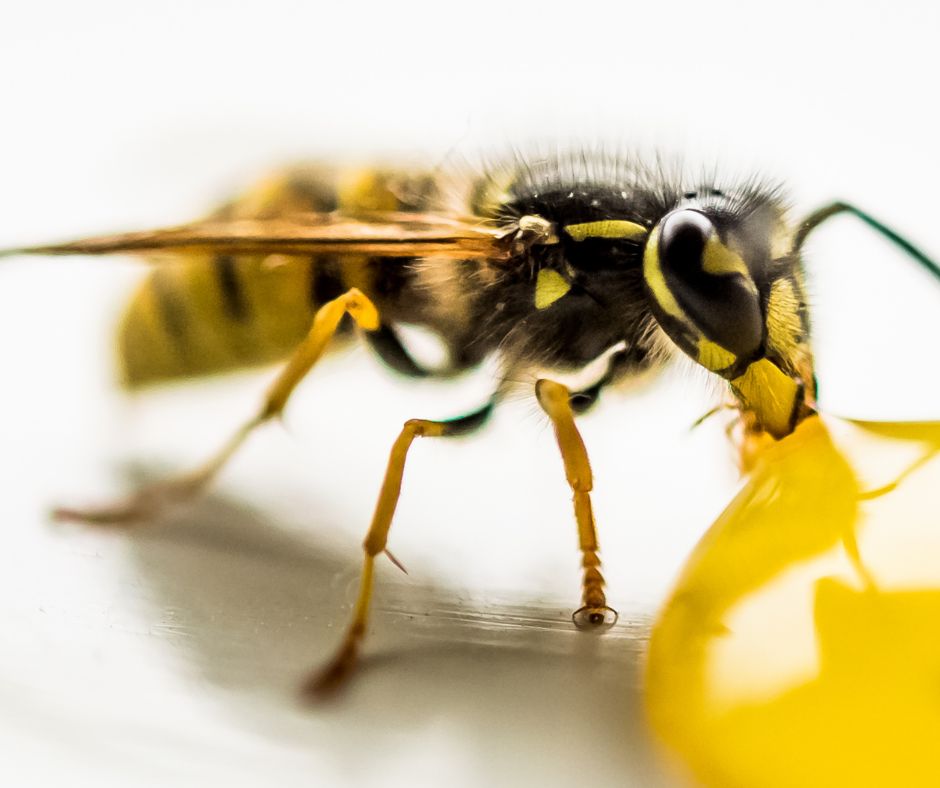Bee Hive Vs Wasp Nest – How To Tell The Difference

Are you trying to tell the difference between a bee hive vs. a wasp nest near or in your home?
During the summer months, you may notice a lot of buzzing around your property. And, for homeowners, it can be hard to tell the difference between what could be a bee hive or potentially a wasp’s nest.
While these insects are good for our environment, they may not be a good backyard neighbor, especially if you have kids or pets playing in the yard regularly and want to avoid stings or potential allergic reactions.
You’ll want to remove them as quickly as possible. However, this should be done with caution as some species of bees are protected while others are very protective and may become aggressive towards you.
To help you identify the type of nest, here’s what you need to know about bee hives and wasp nests.

Different Nest Characteristics
Did you know every type of bee and wasp will build and maintain a different type of nest? Here are the major differences between bee hives and wasp nests that you should look for.

Bumble Bees
Bumble bee nests are usually found underground in dark cavities such as tree stumps, abandoned rodent burrows, hollow stems, garden sheds, attics, and crawl spaces.
The nest is a waxy substance comprising multiple wax-coated cells connected to a single entrance/exit point. Bees may also conceal the nest’s exterior with soil or other coverings to protect them from predators.
Bumble bees will often build their nests near sources of food and water. They are social insects meaning they live in large colonies with one queen laying eggs which hatch into worker bees.
Carpenter Bees
Carpenter bees, on the other hand, build their nests in unfinished wood such as decks, siding, fascia boards, and even trees. The female carpenter bees use their powerful mandibles to carve out the nest, which comprises several hexagonal cells and a single entrance.
While carpenter bee nests last longer than bumble bee nests, you can safely remove them from your yard or home.

Yellow Jackets
The most distinctive characteristic of a yellow jacket nest is the papery materials created by the yellow jackets themselves. It’s usually shaped like an inverted cone and suspended in the air, typically in bushes, trees, attics, and wall voids.
It is important to note that a single yellow jacket wasps nest can contain up to 5,000 individual insects at one time. When removing the nest, keep a safe distance, as yellow jackets can become aggressive when in danger.
Paper Wasps
The next type is paper wasps, who construct their nests from a dry, paper-like material they create from plant fibers and saliva.
These nests are open at the top with several tiers of cells arranged in concentric circles, usually attached to a single surface such as trees, eaves, attics, or window frames.
Paper wasp nests, like yellow jacket nests, can contain up to 5,000 insects at any time.

Hornets
Finally on our list are hornet nests, which construct large, grey-brown nests with a paper-like appearance, similar to that of the yellow jackets nest.
The main difference between a hornet and a yellow jacket nest is that with hornets, the cells are arranged perpendicularly instead of in concentric circles.
Hornets’ nests are usually in sheltered areas such as tree hollows, attics, and roof soffits.
How To Safely Remove Bee Nests Safely
Now that you know what to look for when differentiating between bee hives and wasp nests, the next step is to figure out how to remove them from your home safely.
We will first talk about safely removing bee nests, especially if you want to avoid harming yourself or the bees.
The best way to do this is by calling a professional beekeeper who can safely remove and relocate the bees. Most beekeepers are trained to move and install bee hives in new locations properly, so you don’t have to worry about the bees returning.
However, if you want to avoid paying for a beekeeper and want to try removing the nest yourself, ensure you do so during the evening when the bees are less active.
When removing a bee nest, wearing protective clothing like long-sleeved shirts, pants, and gloves is vital. This will help protect you from stings and other injuries. Also, ensure you wear closed-toed shoes to protect your feet further.
Consider also having a vacuum cleaner handy or a large bucket filled with soapy water to kill any remaining bees.
Seal cracks or crevices once you’ve removed the nest to ensure the bees don’t return.

How To Safely Get Rid Of Wasp Nests
Getting rid of wasps is a bit trickier than bees because they are more aggressive, and their stings can be painful. That’s why it is best to call a wasp exterminator if the nest is in an area that might be difficult or dangerous to access.
If you decide to remove the nest yourself, wear protective clothing as you would with a bee nest, such as a long-sleeved shirt, pants, gloves, and closed-toe shoes. Wearing these things will help protect you from stings and other injuries.
A chemical pesticide spray or dust is one of the most effective removal methods for wasp nests. These chemicals will kill the wasps and prevent them from rebuilding their nest in the same spot.
If you don’t want to use chemical pesticides, some natural alternatives can be as effective. For instance, spraying a solution of water and dish soap has been known to deter wasps from building nests near your home.

When To Call An Exterminator
Sometimes, the best action might be to call a pest control professional. They will have the knowledge and experience necessary to remove any bee or wasp nests from your home safely.
While this will cost money, removing any existing nests and avoiding new bees or wasps returning to the old nest is often the safest way.
It is important to note that you shouldn’t remove a nest if you don’t know what kind of bee or wasp it is or if you’re allergic to bee or wasp stings. In these cases, it is best to call a professional.
How To Prevent Bee And Wasp Nests
The last step to getting rid of bee and wasp nests is prevention.
To keep them from building any nests in your home, make sure your home is sealed up tight with no cracks or crevices that could provide an entryway for the insects. An excellent place to check for cracks and crevices includes wall cavities, window frames, and doorframes. It is also essential to regularly check your crawl space or attic for any wasps or bee nests.
To prevent them from building a nest in your yard, keep it clean by regularly mowing the lawn and trimming any tree branches or bushes that could provide a good nesting spot. Furthermore, remove any dead wood or hollow trees in your yard.
You can also use a chemical pesticide spray or dust to provide an extra layer of protection.
It is also a good idea to keep food and other attractants, such as sugary drinks, away from the area for prolonged periods.
Finally, if you find any nests, act quickly and remove them as soon as possible before they become a problem.
With these tips and tricks, you can ensure your home stays bee and wasp free.
Check out these tips for DIY Pest Control.



